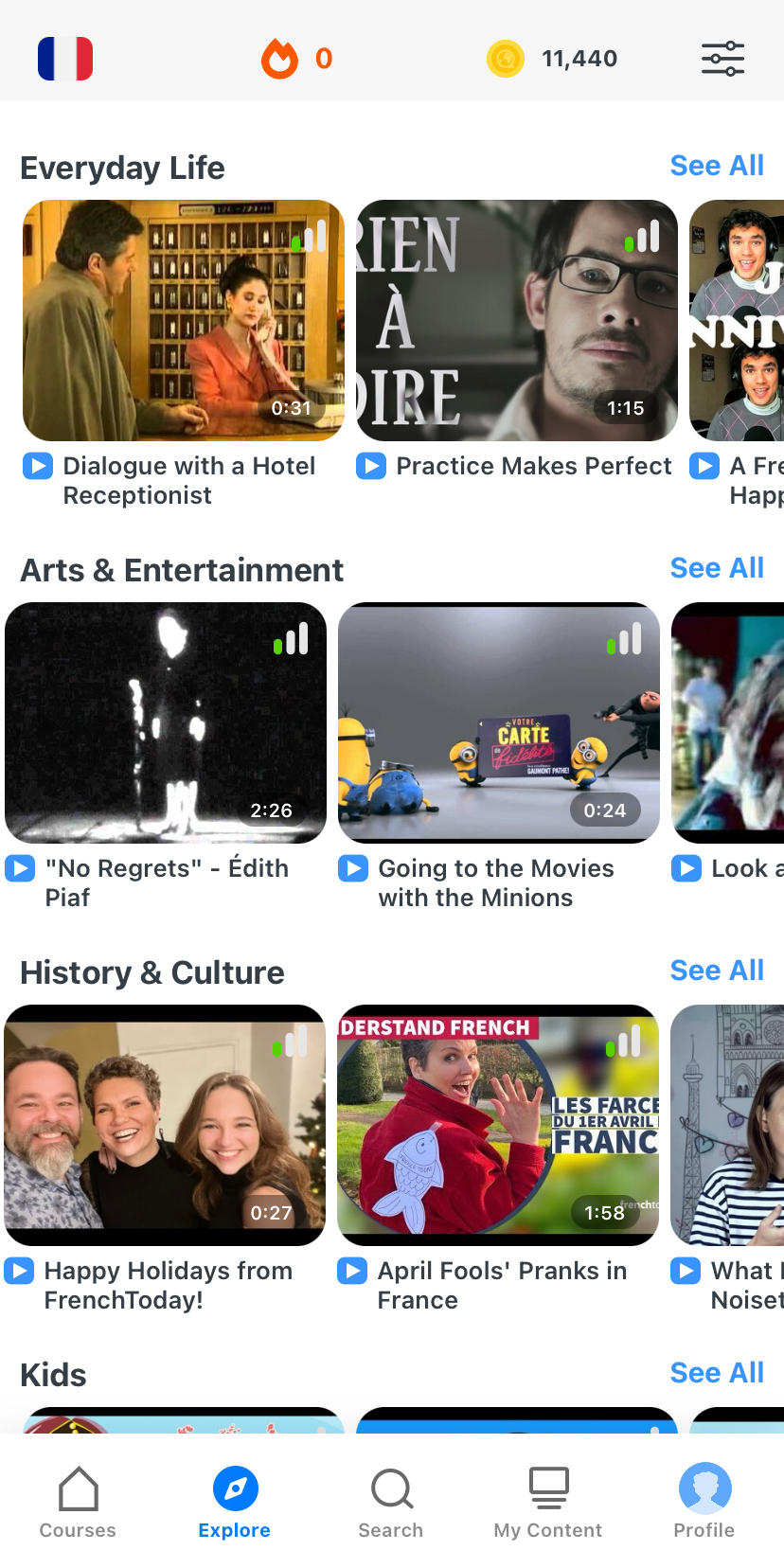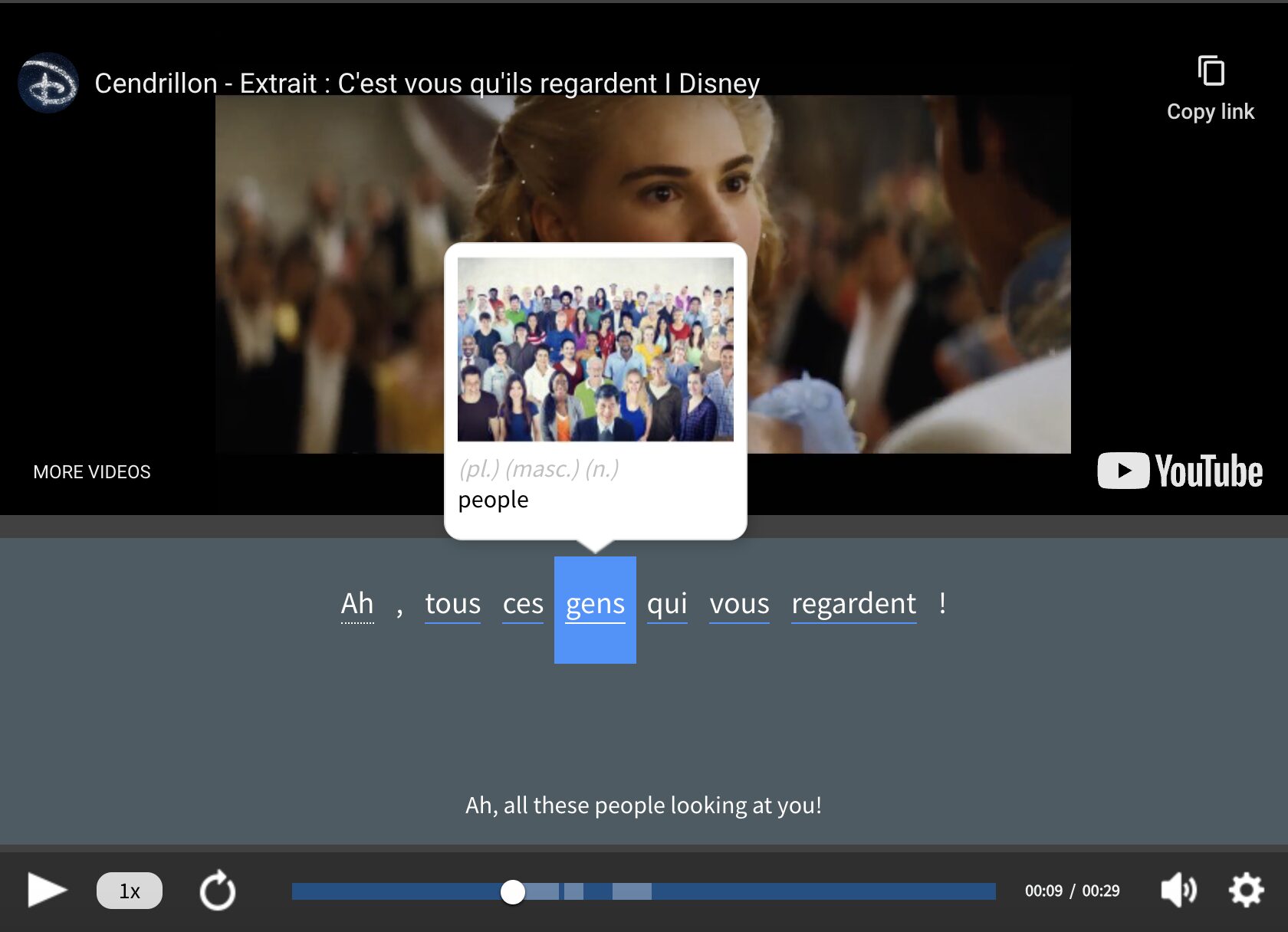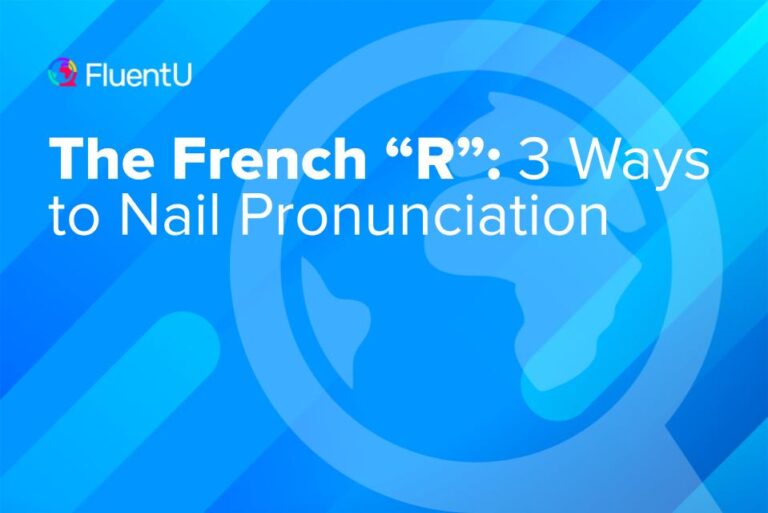The Colors in French: Pronunciation and Expressions

Want to talk about the chromatic wonders that you see around you—in French?
Learning colors in French and the words used to describe them will allow you to convey a number of other feelings and experiences, while discovering a bit more about French culture, too.
In this post, I’ll go over the words for colors in French, as well as the most common ways that you’ll likely encounter them in your kaleidoscopic French life.
Download: This blog post is available as a convenient and portable PDF that you can take anywhere. Click here to get a copy. (Download)
1. Rose — Pink
Rose as a color adjective in French means “pink,” not the warmer crimsony color we Anglophones tend to think of when we use “rose” as a color.
As a noun, however, une rose denotes the same flower as in English.
Note that the pronunciation of rose contrasts with the name of the wine, vin rosé , for which one does pronounce the last letter.
Be aware that rose as an adjective is also used to describe things that are erotic, so a téléphone rose is not a pink telephone, but rather a phone service for… you know what.
2. Orange — Orange
This color, as in English, is the name of the fruit as well. You can thus have jus d’orange (orange juice) at breakfast as well as marmelade d’orange (orange marmalade).
Variants include orange brûlé (burnt orange) and the intentionally vaguer orangé (orangey). Note: orange is an invariable adjective, whereas orangé is not.
What we call a yellow stoplight is seen as orange in France: feu orange .
3. Rouge — Red
Red gets all kinds of uses and associations in English, so it shouldn’t surprise you that the same is true in French.
Rouge is the color of the communists and can work as both a noun to describe such a person or an adjective to describe a viewpoint.
People like me who are rather carefree oenophiles will simply order un verre de rouge (a glass of red) in any French bar, to indicate that we could care less if it is from Bourgogne, Bordeaux, or what have you.
Here are a few other quite easy parallels to English:
- la Croix-Rouge — the Red Cross
- être dans le rouge — to be in the red (accounting)
- chou rouge — red cabbage
- alerte rouge — red alert
- le tapis rouge — the red carpet
The lovely verb rougir means to turn red (in any sense), including to blush.
4. Jaune — Yellow
One of the most important uses of jaune is in Le Tour de France; the leader in the race wears the maillot jaune , or yellow jersey.
Un jaune d’œuf (literally, yellow of egg) is an egg yolk.
As a noun, jaune is an offensive term for an Asian person as well as a scab, in the sense of somebody who goes to work during a strike.
5. Vert — Green
As with the English equivalent, vert gets laden with all sorts of different symbolism and can thus be of use in many situations.
Here’s a short sampling of the most common uses:
- le fruit est encore vert — the fruit isn’t ripe yet
- une politique verte — a green/ecological policy
- manger du vert — to eat greens (vegetables)
- avoir le feu vert — to have the go-ahead/green light
- être vert — to be dejected
- le Parti Vert / Les Verts — the Green Party
- un citron vert — a lime (these are rather unpopular and can be hard to find in France compared to their yellow cousins les citrons , or lemons)
- numéro vert — a toll-free number
6. Bleu — Blue
Bleu has a few fun popular tasks in addition to its day job as an indicator of color. Most compellingly, un bleu is what you might get after being punched in the face (a bruise).
Les Bleus is used to refer to French national sporting teams, such as the national soccer team.
You can also ask for un steak bleu , which means that your meat will barely touch the pan.
And if you don’t know what you’re doing, you’re not green as you would be in English, but rather are considered un bleu .
7. Violet — Purple
Be careful not to confuse this with pourpre (see the following); these aren’t synonyms in French.
To the French eye, when you get too cold your skin turns violet rather than blue.
8. Pourpre — Reddish Purple
There’s a bit of debate about if or to what degree language affects color perception, but in any case, you need to get used to the idea that reddish purple, or pourpre is its own category in French. Cramoisi , or crimson, is purplish red.
The French eye distinguishes pourpre from violet, which is more bluish; only the latter is what Anglophones would generally call purple. You can see an example of pourpre here.
9. Noir — Black
In addition to the simple description of color, noir can be a noun for a black person. Un noir thus means a black man and une noire is a black woman.
The fun and quite useful phrase noir de monde means simply “crowded.”
In addition to its chromatic duty as an adjective, noir can mean “gloomy”; hopefully the idea of film noir now makes that much more sense.
10. Blanc — White
As a noun, blanc can mean both a white person and a white wine. So le blanc boit un blanc (although it sounds a bit silly) could be used to say “the white man is drinking a white wine.”
The noun also means “blank,” for example laisser un blanc is to leave a blank or a space in a document. And, écrit en noir et blanc means the same as in English: written in black and white.
11. Gris — Gray
In addition to its work as a color, the word gris can denote the weather, particularly in Brittany or Paris: il fait gris (it is overcast/gloomy).
When used to describe a person, as in Mathilde est un peu grise , it means that Mathilde is a bit tipsy.
12. Marron — Brown
This variation of brown in French is mostly used to describe a lighter brown eye color. It’s also used to describe most brown objects in French.
As a noun, marron means chestnuts, and you might hear someone say “Chaud, les marrons !” to let you know you should be careful.
This cute French idiom comes from when people would sell roasted nuts on the side of the road and would yell this to draw your attention.
Brun is a darker brown, usually used to describe hair color or skin color.
French Colors and Grammar
In order to use French colors correctly, it’s important that you understand the grammatical rules that surround them.
As nouns, French colors will always be masculine, but we will mostly see colors used as adjectives. As with all adjectives, most French colors will need to reflect the gender and number of the noun they’re describing.
Some colors will add an e for feminine nouns and an s if the noun is plural.
There are exceptions to this, as marron and orange never change, despite the gender or number. There are also a few colors that end in e, such as jaune and rouge, so they don’t change with gender.
Here is a table with the colors we’ve covered and their variations with gender and number.
| English | Masculine Singular | Feminine Singular | Masculine Plural | Feminine Plural |
|---|---|---|---|---|
| Pink | Rose | Rose | Roses | Roses |
| Orange | Orange | Orange | Orange | Orange |
| Red | Rouge | Rouge | Rouges | Rouges |
| Yellow | Jaune | Jaune | Jaunes | Jaunes |
| Green | Vert | Verte | Verts | Vertes |
| Blue | Bleu | Bleue | Bleus | Bleues |
| Purple | Violet | Violette | Violets | Violettes |
| Reddish Purple | Pourpre | Pourpre | Pourpres | Pourpres |
| Black | Noir | Noire | Noirs | Noires |
| White | Blanc | Blanche | Blancs | Blanches |
| Gray | Gris | Grise | Gris | Grises |
| Brown | Marron | Marron | Marron | Marron |
Using Colors in French
I hope that this has given you a window into the colorful world through French eyes. There’s a lot to take in, and as we’ve seen, both fundamental and frivolous ways that these color words allow us to experience the world differently in French.
The next step is to put these color words to use! The French Your Way podcast has a great episode about various French expressions that use colors.
You can also listen to the correct pronunciation of various color words in context with the FluentU language learning program.
FluentU takes authentic videos—like music videos, movie trailers, news and inspiring talks—and turns them into personalized language learning lessons.
You can try FluentU for free for 2 weeks. Check out the website or download the iOS app or Android app.
P.S. Click here to take advantage of our current sale! (Expires at the end of this month.)
With any luck, you’ll soon be integrating this vocabulary into your own communication, thinking about and living in the colorful world it describes!
Download: This blog post is available as a convenient and portable PDF that you can take anywhere. Click here to get a copy. (Download)
And One More Thing...
If you like learning French at your own pace and from the comfort of your device, I have to tell you about FluentU.
FluentU makes it easier (and way more fun) to learn French by making real content like movies and series accessible to learners. You can check out FluentU's curated video library, or bring our learning tools directly to Netflix or YouTube with the FluentU Chrome extension.
One of the features I find most helpful is the interactive captions—you can tap on any word to see its meaning, an image, pronunciation, and other examples from different contexts. It’s a great way to pick up French vocab without having to pause and look things up separately.
FluentU also helps reinforce what you’ve learned with personalized quizzes. You can swipe through extra examples and complete engaging exercises that adapt to your progress. You'll get extra practice with the words you find more challenging and even be reminded you when it’s time to review!
You can use FluentU on your computer, tablet, or phone with our app for Apple or Android devices. Click here to take advantage of our current sale! (Expires at the end of this month.)










